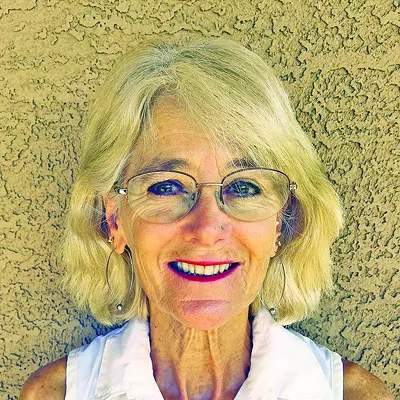One prisoner wrote, "There have been a couple of times I've tried to end my life in here, but they keep reviving me and bringing me back. When I asked why, I was told, 'You're not going to die on us; we're not through punishing you.'"
This is not a description of the detention facilities at Guantanamo Bay or Abu Ghraib. It's a snapshot of life in the Arizona Department of Corrections' Special Management Unit, or SMU.
As the nation moves from the shock of witnessing photos of torture at Abu Ghraib to calls for the closure of Gitmo, those of us familiar with prisons in the good ol' U.S.A. can but shake our heads. The horrors in those facilities half a world away are not new, and they're not reserved for suspected terrorists. They're just another U.S. export.
Exported, in the case of Abu Ghraib, directly from the state of Arizona. In 2003, a former director of the Arizona Department of Corrections, Terry Stewart, was commissioned by the State Department to oversee the development of Iraqi prisons. Sen. Charles Schumer, D-N.Y., called on the Department of Justice to investigate the involvement of Stewart in Abu Ghraib, noting that Stewart had a "shocking record of tolerating prisoner abuse" as director of Arizona's prisons.
Stewart's tenure at the ADC spanned from 1995 to 2002. One of the major developments in the system during that period was the creation of Arizona's "supermax" units. Stewart proudly boasted of his high-tech supermax facilities, which became the model for the lockdown units in Pelican Bay, Calif., and Florence, Colo. (home of Ted Kaczynski and Zacarias Moussaoui).
Conditions in the SMUs during Stewart's era were appalling. In April 1999, the Tucson Weekly reported on a litany of abuses in the units, including the use of attack dogs, the indiscriminate use of pepper spray, violent attacks, suicides and self mutilation, and psychosis ("Supermax: Inside, No One Can Hear You Scream," Tucson Weekly, April 29, 1999).
The reign ended in 2003, when Gov. Janet Napolitano appointed Dora Schriro as head of corrections. She inherited a dysfunctional system plagued with a good-ol'-boy mentality and a focus on control above any effort at "correction." Schriro touts a new correctional model she developed at her old job as head of the Missouri prison system. She calls it the "parallel universe," meaning that prisons should function as much as possible like the real world in order to prepare prisoners to function as members of society. Its application to supermax units is long overdue.
As reported earlier in the Weekly ("Isolated and Ill," May 24, 2007), a new report shows that the type of long-term solitary confinement practiced in the SMUs is not only ineffective at controlling violence; it actually creates more problems than it solves. While the conventional wisdom is that supermax units are necessary to confine the "worst of the worst," research shows that supermax units are more likely to create this type of prisoner.
That's because long-term isolation literally makes people insane. Supermax prisoners develop a syndrome involving hallucinations, hypersensitivity to noise and touch, paranoia, uncontrollable feelings of rage and fear, and distortions of time and perception. Our state's experience would seem to bear out these trends--one in four prisoners in Arizona's SMUs is mentally ill.
If Schriro's concern is preparing prisoners to re-enter society, it's safe to say that the SMUs present a problem, especially considering that some prisoners are released directly from SMUs to the streets with no transition time or assistance.
Schriro has proven that she has a different correctional philosophy from Stewart. She is instituting a range of new policies to modernize the ADC and bring it in line with accepted correctional practices. The SMUs should be among the old policies thrown on the trash heap. Arizona has the opportunity to offer a new kind of prison model to the world--one that actually contributes to public safety.










